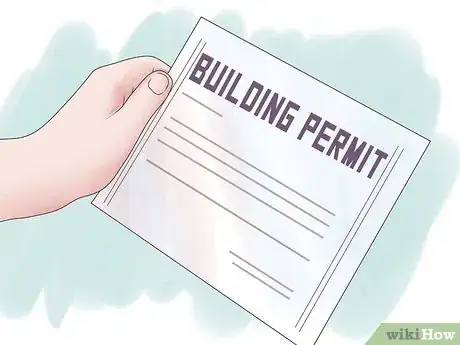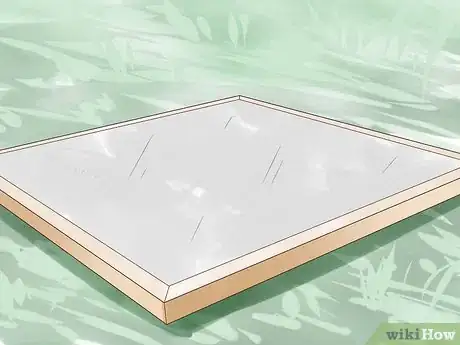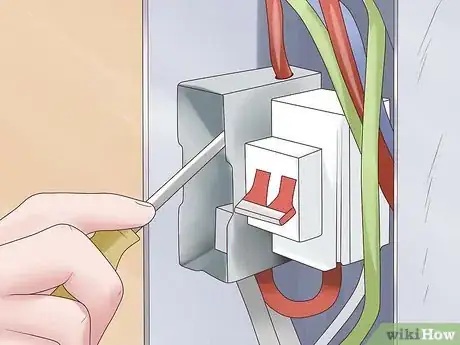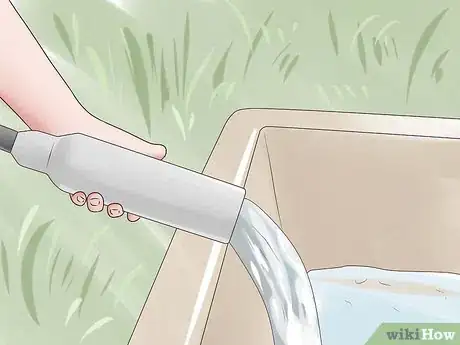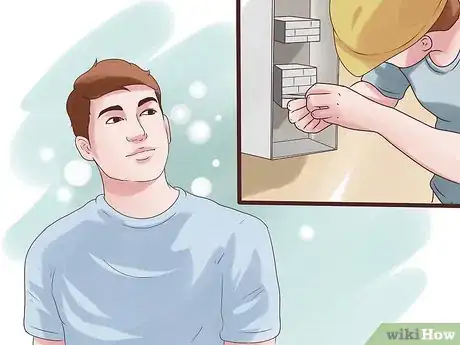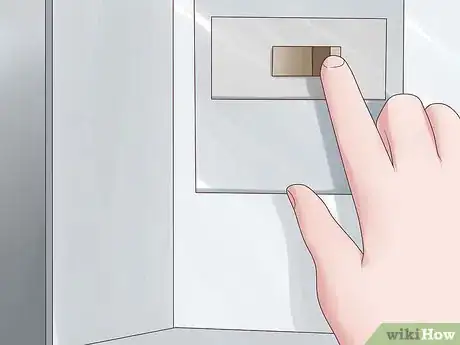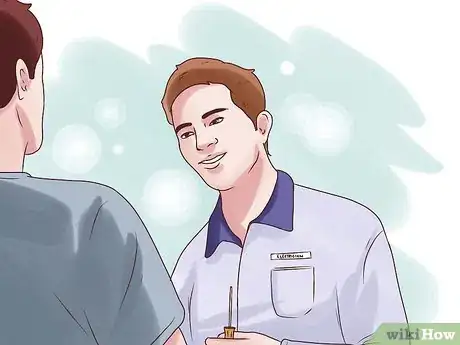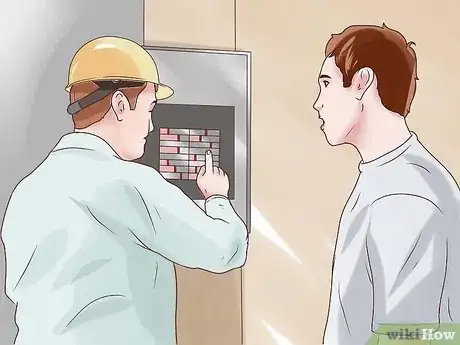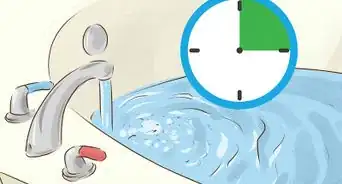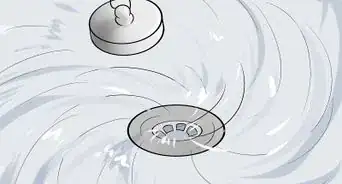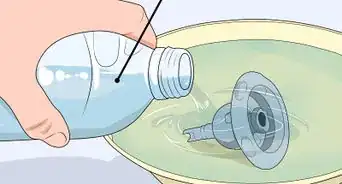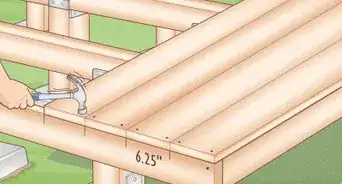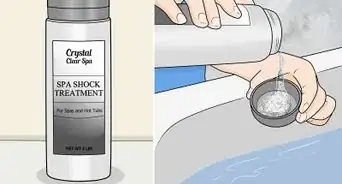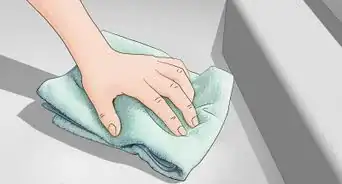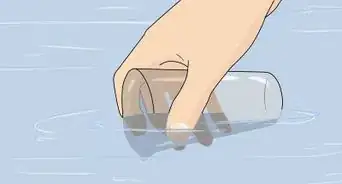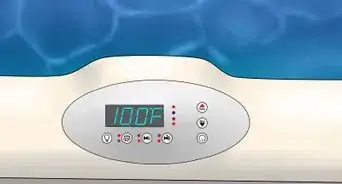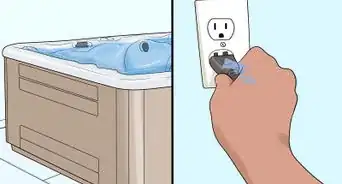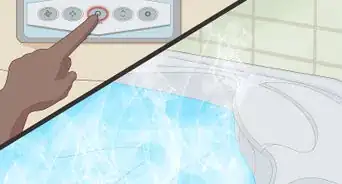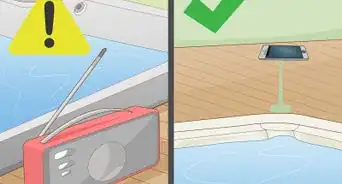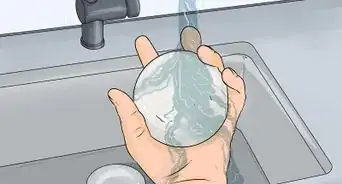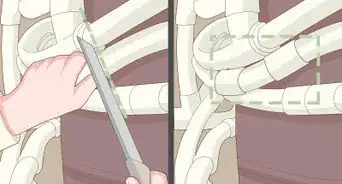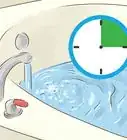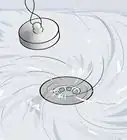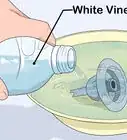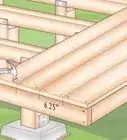This article was co-authored by Matt Daly. Matt Daly is a Landscape Designer and the Founder of Water & Earth Landscape Design, which is based in both Richmond, Virginia, and San Jose, California. With nearly 10 years of experience, he specializes in designing outdoor living spaces, including patios, pools, and fireplaces. Matt also runs a blog where he educates homeowners about landscaping topics: https://www.liveinyourbackyard.com/. He earned his Landscape Design & Horticulture Certification from The University of Richmond, where he also studied Sustainable Landscape Practices.
This article has been viewed 416,203 times.
A hot tub can be a relaxing addition to your backyard. Because they are large, electrically complex systems, installing hot tubs can be tricky. Modern hot tubs tend to be self-contained, which means there is no plumbing involved in the setup. Even so, installing a hot tub requires planning and compliance with city codes. Start with Step 1 to begin setting up your hot tub.
Steps
Prepping for Success
-
1Check to see if you need a building permit. Many cities will require building permits for installing hot tubs outdoors.[1] Check with yours to see if you need to as well.
-
2Choose a location for your hot tub.[2] Make sure the spot you choose is large enough for the hot tub as well as some extra leeway for getting in and out and performing maintenance. A safe amount to allot is approximately 10 feet (3.0 m) by 10 feet (3 m by 3 m), but it depends on the size of your hot tub.
- Examine your city's building code to ascertain how far away from your home you must place your hot tub. Many codes require at least 5 feet (1.5 m) of clearance between your home and your property line.
- Two other regulations you need to consider when finding a place for the hot tub. The hot tub should be at least 10 feet (3 m) away from any overhead power lines, as well as 5 feet (1.5 m) removed from the spa panel. Water and electricity do not mix.
Advertisement -
3Prep the site, if necessary. Hot tubs, when full, can weigh as much as 3,000 pounds (1,361 kg). For this reason, you will need a firm foundation on which the hot tub can rest. If you don't have a firm foundation, you risk damaging the tub voiding any warranty it comes with.
- Pouring concrete into a 3 to 4 inch thick (7.62 to 10.16 cm) pad is a common method of creating a solid foundation. Concrete provides a very strong foundation. At the same time, it may not be aesthetically pleasing and will be permanently anchored into place if you ever choose to move the hot tub.
- Another option is prefabricated spa pads. These pads have interlocking grids that make installation easy, and they can be removed if you ever decide to relocate your tub. At the same time, spa pads may be less supportive than concrete. Make sure you have a solid base to work with, and you choose the strongest pads if you use this option.
-
4Call a general contractor or a structural engineer if you decide to place your tub on a deck or build a deck to accommodate the tub. If you want to place your tub onto a deck, check first with a contractor. They should be uniquely suited to tell you whether the deck will be able to withstand a ton or more of weight bearing down on it like a continuous hammer. The last thing you want to have happen is to break your deck, and then your tub, upon installation.
-
5Create a route for the power to reach the hot tub.[3] Most modern tubs are self-contained, meaning you won't have to run any plumbing in order to get the tub up and running. But electrical wiring is another matter. Cities usually have codes for using certain types of conduits, so make sure you talk with your local building department. When you have, decide if you'd like the conduit to run under or above ground.
- Most pumps will require an extra hard-wired circuit, one that's entirely dedicated to the electrical on the tub. A 240V, 50-amp GFCI (Ground Fault Circuit Interrupter) should be sufficient on many tubs. Multiple-pump tubs may require a 60-amp circuit. If you don't have familiarity wiring this kind of circuit, it's best to call an electrician to do it for you.
Installing the Hot Tub
-
1Plan your delivery route of the tub from the curb to the foundation. An unfilled hot tub can weigh upwards of 800 pounds (363 kg), so it's important to know how you will get it from the delivery van to your backyard. Make sure that the width of the tub will pass through any gates, foliage, or structures with enough leeway.
- Some delivery drivers will help you with this step.
- If you find that the tub is bigger than certain obstacles in your path will allow, you may need to improvise. Cutting a branch or removing a part of a fence, although it appears drastic, is sometimes the only thing that you can do.
-
2Assemble the hot tub and hook up the electricity.[4] The voltage of a hot tub is higher (usually around 240 volts) than regular home outlets, so you will need to install a breaker to your electrical control box. If you are not familiar with electrical systems, it is best to hire an electrician to assist you in this aspect of installation. See the section below for more information on electrical wiring and help.
-
3Prepare the hot tub for use. You're almost ready to start enjoying your brand new tub, without having broken the bank by paying someone else to install it. To complete the installation, you'll want to:[5]
- Turn off the electricity.
- Clean the interior of the hot tub and make sure all jets and knobs are in place.
- Open the air valves.
- Fill the hot tub with water from a garden hose or using buckets of water from inside. No special water is necessarily required.
- Turn the electricity back on and begin heating the tub.
- Mix in the proper chemicals to ensure sanitation.
Taking Care of the Electrical
-
1Know that some warranties will be voided if the electrical circuit isn't installed by an electrical contractor. In some cases, unless the circuit has been installed by a licensed contractor and then approved by a local building/electrical inspector, the manufacturer won't recognize the warranty.
-
2If you decide to do the wiring yourself, keep the power on a single dedicated circuit. The power that runs the hot tub must be given a dedicated circuit because of its electrical demands. No other appliances or electrical demands should share the power.
-
3If wiring on your own, make sure your specs are right. Again, if there is any doubt about how to wire the circuit responsible for the hot tub, use a licensed electrician. Otherwise, here is some important information about wiring that you should know:
- The size of the wire you use must be approved by the National Electrical Code (NEC)[6] and/or local codes.
- The size of the wire you use should be based on the length of run from the breaker box to the hot tub. The maximum current draw should also play a role in determining wire size.
- Copper wire is recommended with THHN (thermoplastic nylon) insulation. In fact, all wiring should be copper; aluminum wire should be avoided.
- If using wire larger than #6 (10mm2), be sure to put a junction box close the hot tub. Then, reduce the wire to short lengths of #6 (10mm2) in between the junction box and the hot tub.
-
4If you have any doubts, use the services of a professional. When it comes down to it, saving a few hundred extra bucks isn't worth the potential disaster of voiding the warranty or causing serious bodily harm or death. Please see a professional if you no experience wiring electrical circuits.
Expert Q&A
-
QuestionCan a hot tub go on a raised wooden deck?
 Matt DalyMatt Daly is a Landscape Designer and the Founder of Water & Earth Landscape Design, which is based in both Richmond, Virginia, and San Jose, California. With nearly 10 years of experience, he specializes in designing outdoor living spaces, including patios, pools, and fireplaces. Matt also runs a blog where he educates homeowners about landscaping topics: https://www.liveinyourbackyard.com/. He earned his Landscape Design & Horticulture Certification from The University of Richmond, where he also studied Sustainable Landscape Practices.
Matt DalyMatt Daly is a Landscape Designer and the Founder of Water & Earth Landscape Design, which is based in both Richmond, Virginia, and San Jose, California. With nearly 10 years of experience, he specializes in designing outdoor living spaces, including patios, pools, and fireplaces. Matt also runs a blog where he educates homeowners about landscaping topics: https://www.liveinyourbackyard.com/. He earned his Landscape Design & Horticulture Certification from The University of Richmond, where he also studied Sustainable Landscape Practices.
Landscape Designer You'll have to consult a structural engineer to be sure. Let's say you want to put a 200 lb (90.7 kg) hot tub that's 8 by 8 ft (2.4 by 2.4 m) and 3.5 ft deep (1.1 m) on your existing deck. That would give you 1,680 gallons (6,359.5 L) of water, which weighs 14,000 lb (6,350 kg). Instead of dealing with 200 lb (90.7 kg), you'd actually be dealing with 14,200 lb (6,441 kg)—that's why it's so important to consult with a structural engineer.
You'll have to consult a structural engineer to be sure. Let's say you want to put a 200 lb (90.7 kg) hot tub that's 8 by 8 ft (2.4 by 2.4 m) and 3.5 ft deep (1.1 m) on your existing deck. That would give you 1,680 gallons (6,359.5 L) of water, which weighs 14,000 lb (6,350 kg). Instead of dealing with 200 lb (90.7 kg), you'd actually be dealing with 14,200 lb (6,441 kg)—that's why it's so important to consult with a structural engineer. -
QuestionHow do I drain the water in a hot tub?
 Community AnswerInvest in a water vacuum. They drain water and can always be stored for emergency situations such as a burst pipe.
Community AnswerInvest in a water vacuum. They drain water and can always be stored for emergency situations such as a burst pipe. -
QuestionWhat is a whip on electrical installation?
 Community AnswerBasically it's a power cord without the plug that will be hardwired into a circuit box instead of being plugged into an outlet.
Community AnswerBasically it's a power cord without the plug that will be hardwired into a circuit box instead of being plugged into an outlet.
Warnings
- Some cities require you to have a building permit to install a hot tub. Always check your city codes before installing a hot tub yourself.⧼thumbs_response⧽
- Your electrical systems must adhere to city codes and pass inspection. Do not wire your hot tub without studying the laws and performing necessary legal steps.⧼thumbs_response⧽
- Do not overfill your hot tub. Excess leakage of water can damage the foundation.⧼thumbs_response⧽
Things You'll Need
- Hot tub
- Shovel
- Concrete
- Measuring tape
- Water
- Chemicals
References
- ↑ http://www.homedepot.com/hdus/en_US/DTCCOM/HomePage/Superfeatures/Bath/Spas/Docs/TheHomeDepot-SpaPreDeliveryGuide.pdf
- ↑ https://www.foxnews.com/real-estate/what-to-consider-before-installing-a-hot-tub
- ↑ https://www.homedepot.com/c/ah/how-to-wire-a-hot-tub/9ba683603be9fa5395fab901962b5e2
- ↑ https://www.spadepot.com/wiring-hot-tub-spa.htm
- ↑ https://www.swimuniversity.com/start-hot-tub/
- ↑ http://www.nfpa.org/codes-and-standards/document-information-pages
About This Article
To install a hot tub, first, check your area’s building code to see if you need a permit to have one. Additionally, make sure you have a space on your property where your hot tub can fit while still being the necessary distance away from your house according to the building code. Once you have a spot for your hot tub, prep the site with a 3 to 4 inch thick pad of concrete as a foundation. Consider hiring an electrical contractor to help route power to your hot tub and install the electrical circuit, since many warranties will be voided if you do it yourself. After your hot tub is delivered, clean the interior, open the air valves, and fill it with water from a garden hose. For more help, like how to do the wiring yourself, read on.
